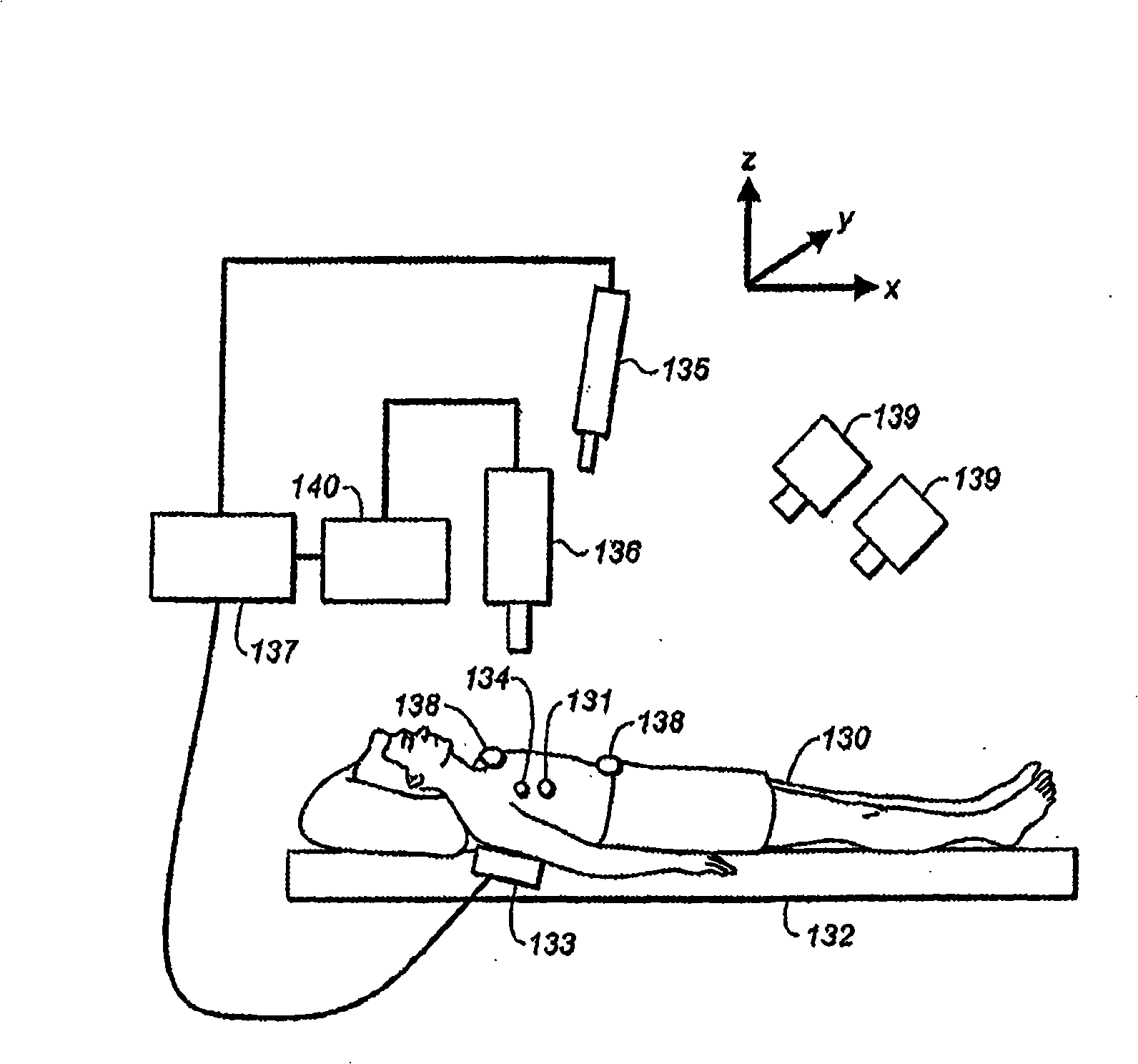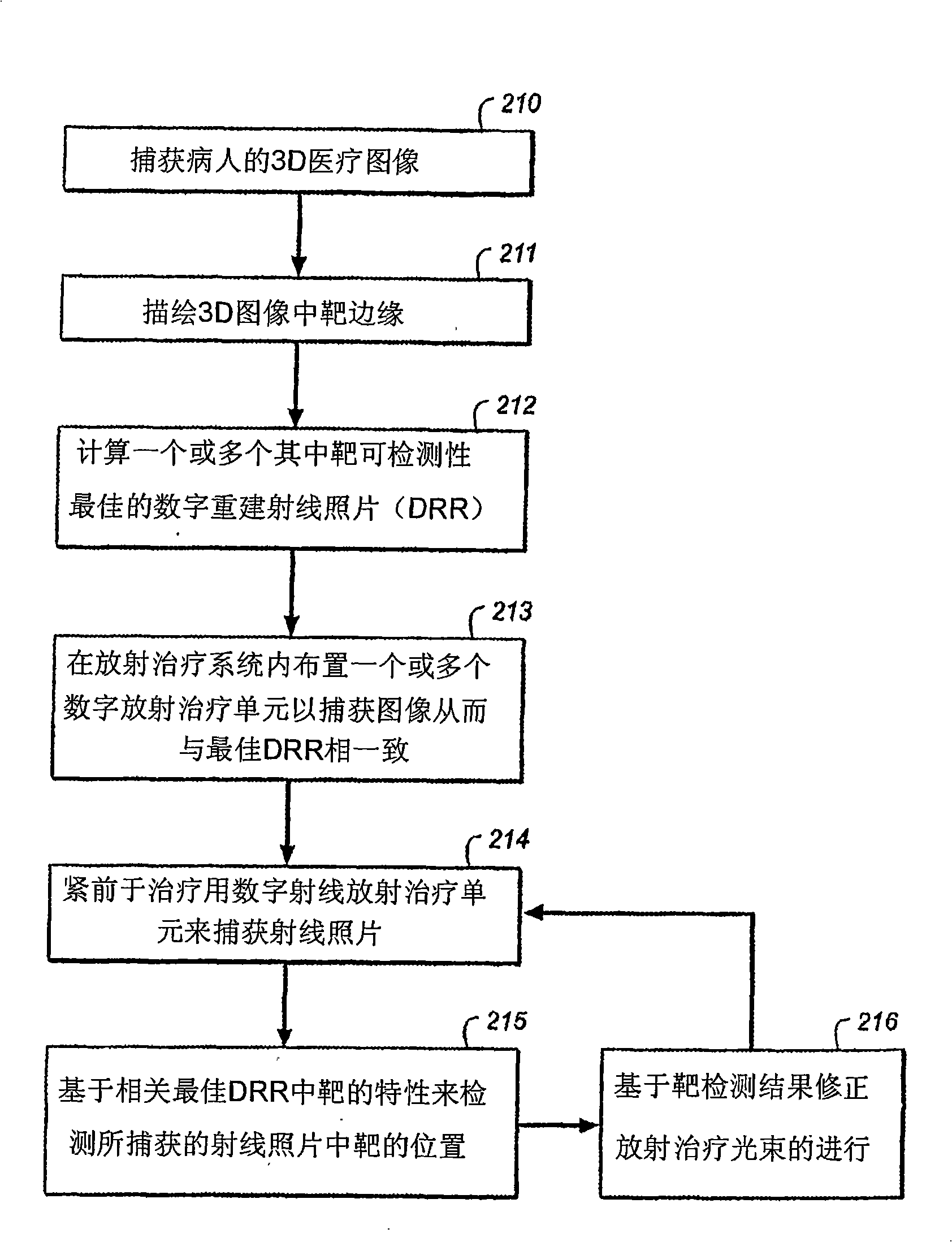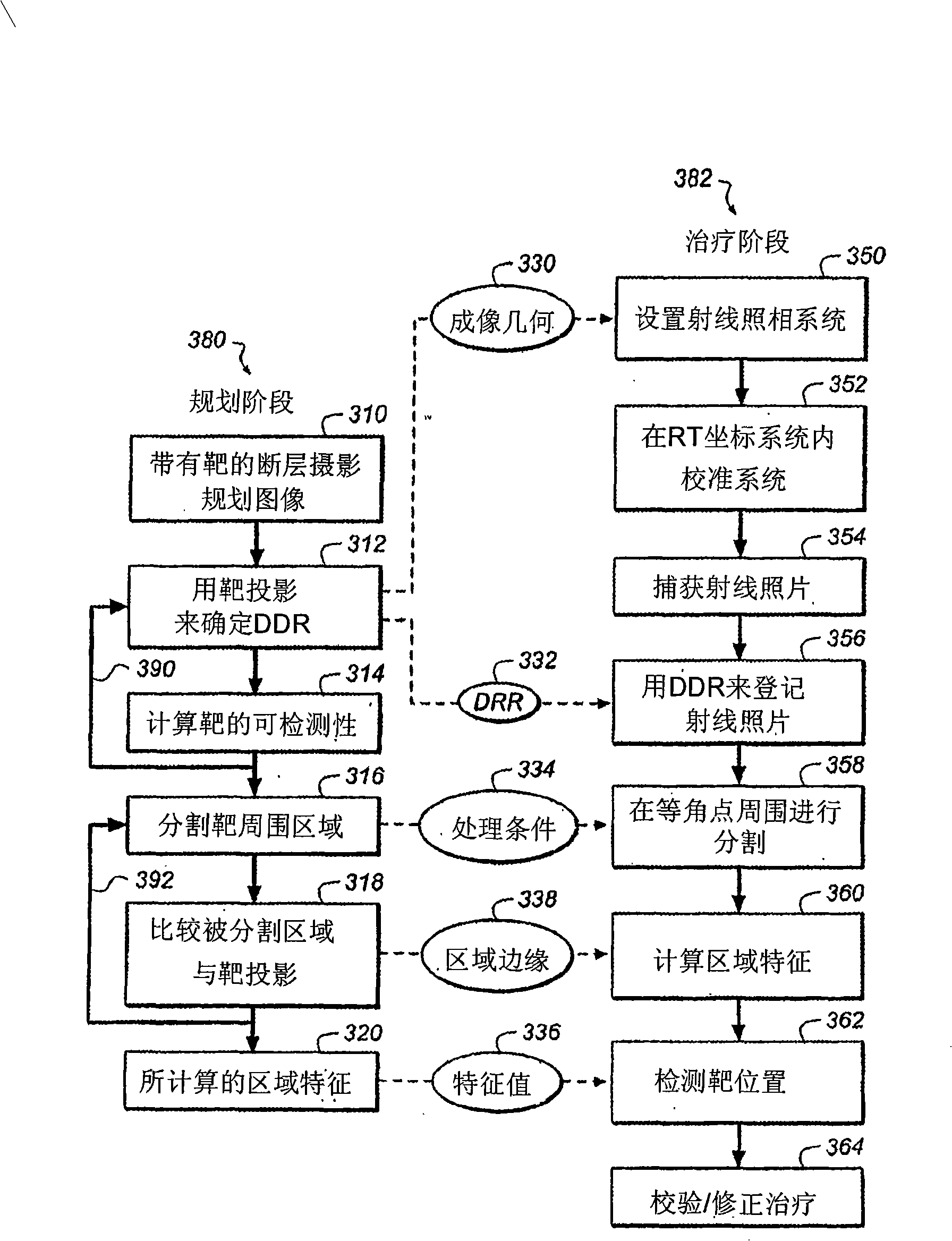Adaptive radiation therapy method with target detection
A technique for radiotherapy, radiographs, used in the field of target detection during radiotherapy
- Summary
- Abstract
- Description
- Claims
- Application Information
AI Technical Summary
Problems solved by technology
Method used
Image
Examples
Embodiment Construction
[0024] The following is a detailed description of preferred embodiments of the present invention with reference to the accompanying drawings, in which like reference numerals denote like structural elements.
[0025] figure 1 An exemplary radiation therapy system with automatic target position detection is shown. refer to figure 1 , the patient 130 is on a support member such as a treatment couch 132 . The patient is strapped with two or more external markers 138 . The position of the external markers is monitored by a camera 139 . The treatment radiation source 136 is aimed at the isocenter 134 under treatment.
[0026] The radiographic unit consists of a diagnostic X-ray source 135 and a digital X-ray imaging device 133 images the region of the target 131 . A radiotherapy system would preferably have more of that radiographic unit to enable positioning of targets in three dimensions.
[0027] The system has a method to accurately determine the position and orientation ...
PUM
 Login to View More
Login to View More Abstract
Description
Claims
Application Information
 Login to View More
Login to View More - R&D
- Intellectual Property
- Life Sciences
- Materials
- Tech Scout
- Unparalleled Data Quality
- Higher Quality Content
- 60% Fewer Hallucinations
Browse by: Latest US Patents, China's latest patents, Technical Efficacy Thesaurus, Application Domain, Technology Topic, Popular Technical Reports.
© 2025 PatSnap. All rights reserved.Legal|Privacy policy|Modern Slavery Act Transparency Statement|Sitemap|About US| Contact US: help@patsnap.com



